I think the buildings in Sydney are pretty impressive for such a young city. I love strolling the inner city area looking up and noticing the small details, especially along Macquarie Street which is home to some of Sydney’s best buildings, a mix of old and new, covering various styles from Gothic Revival to modern skyscrapers.
To help you learn more about Sydney’s tallest building, the city’s oldest buildings and a few of the most stunning new buildings in the city, I made this shortlist of my personal favourites.
This page contains affiliate links. You can find our full disclosure policy here.
Sydney is a beautiful city. It is blessed with the natural wonder that is the harbour, but its artificial structures can be just as impressive. If you’re an architecture buff (or simply someone with an eye for beauty), a walk-through Sydney’s streets with your head craned upwards can be a very rewarding way to spend your day.
Big names in Sydney’s architectural scene include Francis Greenway, the city’s first architect and a former convict, James Barnett, a state employee who built many of the city’s most loved heritage buildings and in more recent times, local Henry Seidler, and international architects Renzo Piano, Frank Gehry and Kengo Kuma.
So in no particular order, we present our favourite Sydney buildings…
The Exchange
The Exchange, the focal point of a rejuvenated Darling Square, is new to the city. With its spiraling hive of wooden ribbons, isn’t just a visual delight; it’s a dynamic blend of motion and modern design. The work of Japanese architect Kengo Kuma, this building feels alive, constantly changing its appearance with every step you take around it.
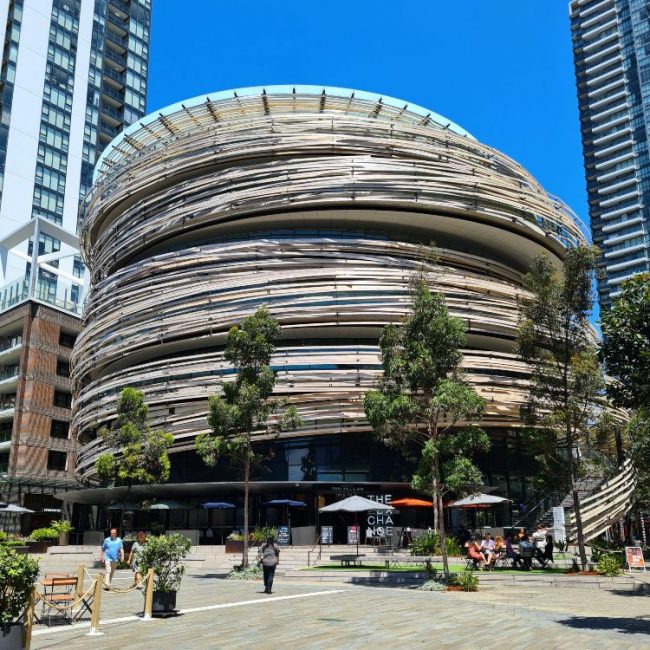
The six-story building, which features a library, childcare centre and dining options, is covered in over 20,000 metres of Accoya softwood.
After grabbing some refreshments on the ground floor, make your way to the Sydney City Library. Then, venture out onto the balconies and see the wooden ribbons up close.
Related: If you decide to dine nearby, check this list of our favourite places to eat in Darling Harbour first.
Architect: Kengo Kuma l Opened: 2020
Address: 1 Little Pier St, Haymarket
Building 8, aka Dr Chau Chak Wing Building
Frank Gehry’s Dr Chau Chak Wing Building, affectionately known as the ‘squashed brown paper bag,’ is a divisive marvel. Walking around it, you can’t help but feel the playful genius of Gehry, who turned 320,000 uniquely crafted bricks into an architectural conversation starter
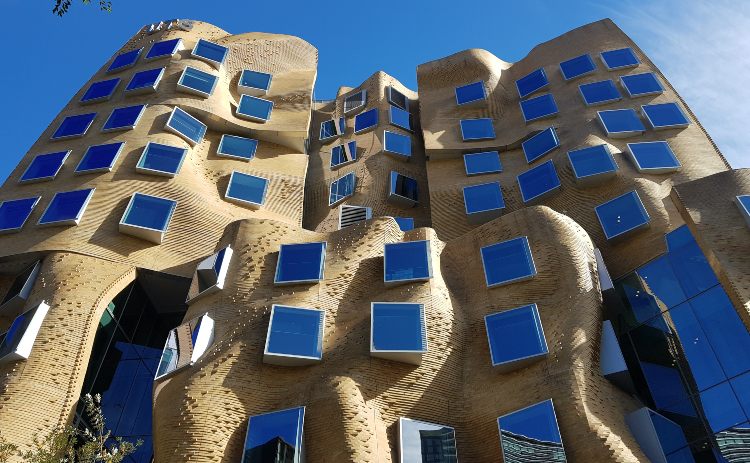
“They named the building for Australian-Chinese business owner and philanthropist Dr Chau Chak Wing, who donated $20 million to the project.”
University of Technology Sydney
The building, which houses the University of Technology Sydney Business School, was created using 320,000 specially designed hand-made bricks. The project, which cost 180 million dollars, is best viewed from the Goods Line between Central Station’s Devonshire Tunnel and Darling Harbour.
Architect: Frank Gehry l Opened: 2015
Address: 14–28 Ultimo Road Ultimo
One Central Park
One Central Park, an expansive building incorporating residential apartments and commercial businesses, is best known for the beautiful hanging gardens that run down its glass walls.
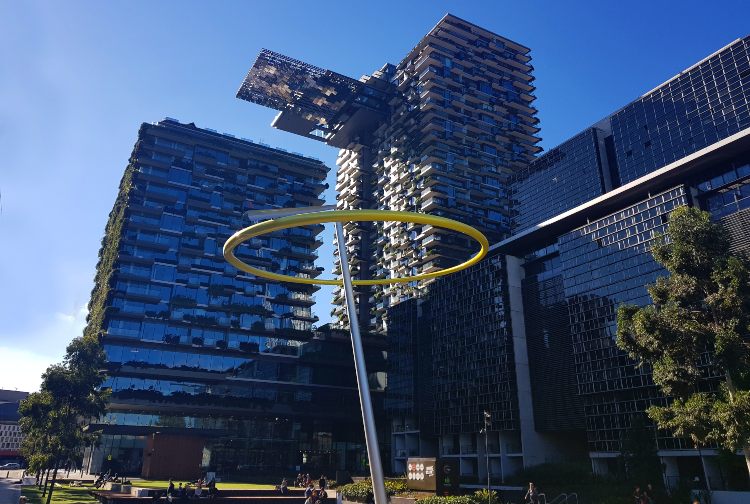
Another eye-catching feature is the cantilevered heliostat, which reflects light down into the shopping centre.
Come darkness, the Heliostat turns into an artwork featuring an LED light display by artists Yann Kersalé.
One Central Park has won seven international awards for its sustainability, including Best Innovative Green Building in 2015.
Architect: Jean Nouvel l Opened: 2013
Address: 28 Broadway Chippendale
Crown Sydney, aka One Barangaroo
Crown Sydney, one of the newest significant buildings in Sydney, is also its tallest at 217.3m.
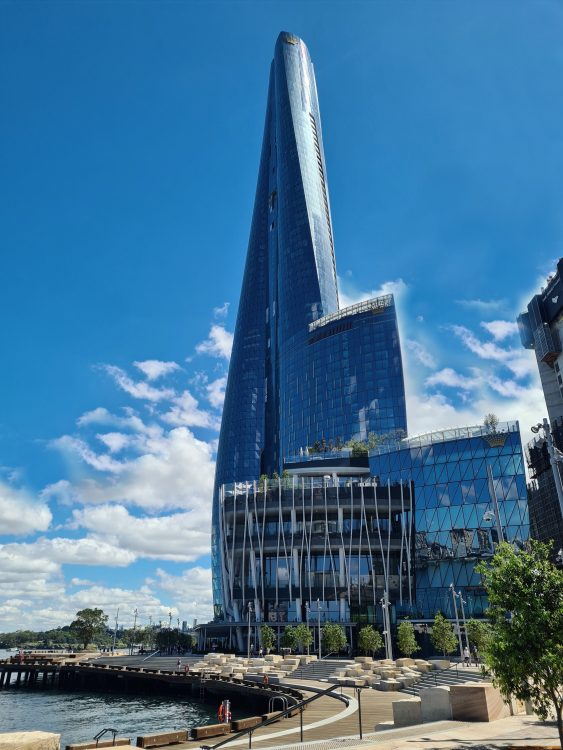
A very contemporary titan of twisting glass, Crown Sydney is a monument to money. You will need to be cashed up to spend time inside this shiny structure, whether visiting the yet open Casino, the opulent 6-star hotel or buying one of the 82 private residences.
The tower “is derived from a sculptural form that is reminiscent of three twisting petals and takes inspiration from nature, being composed of organic forms without literal or direct reference”.
WilkinsonEyre London
The rest of us can dine at one of the 14 restaurants or bars, including Japanese fine dining experience Nobu and buffet-style restaurant Epicurean.
Architect: WilkinsonEyre London l Opened: 2020
Address: 1 Barangaroo Ave
Aurora Place
Aurora Place, one of the ten tallest buildings in Sydney, features two towers, one housing offices and the other private residences. However, these are no ordinary towers. Shunning the box, Aurora Place pays homage to the nearby Sydney Opera House, bulging and twisting like the harbour far below.
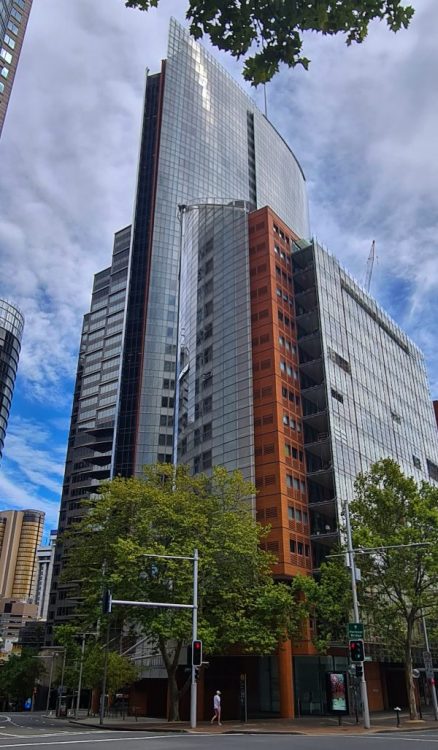
Those lucky enough to call one of the 17 residential floors home have views over the Royal Botanic Gardens, while the offices face the city’s west.
Architect: Renzo Piano l Opened: 2000
Address: 88 Phillip St Sydney
Strand Arcade
The Strand Arcade, a beautiful Victorian-era shopping arcade, connects Pitt Street Mall to George Street. Its ornate design makes it a charming spot in the heart of Sydney’s CBD.
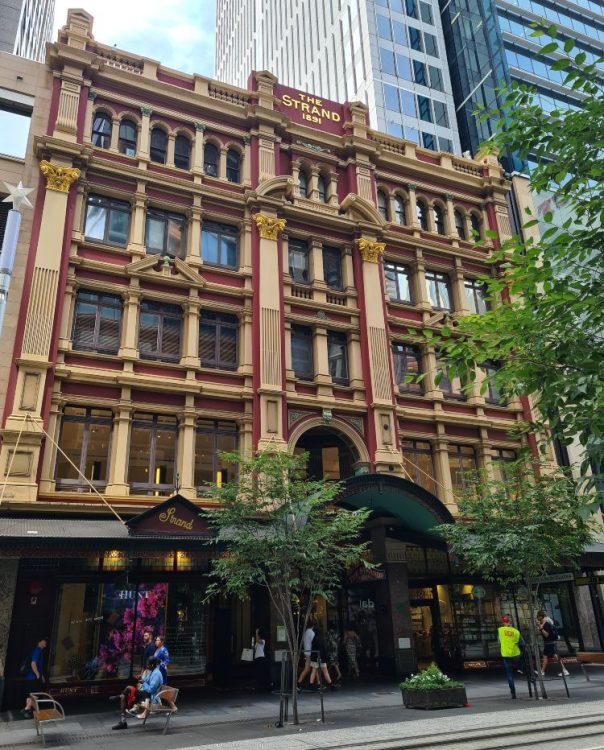
The arcade’s custodians have worked carefully to ensure that the shopfronts’ ornate Victorian styles are exact replicas of the pre-Federation originals.
Did you know that Sydney once had 3 Victorian style arcades: Piccadilly, Imperial and the Royal Arcade?
Architect: John Spencer l Built: 1892
Address: 412-414 George St, Sydney
Grace Building (Grace Hotel)
The Grace Building, inspired by the world-famous Tribune Building of Chicago with its neo-Gothic exterior and art déco interior, is a piece of Chicago in Sydney. Originally the Grace Bros Department Store, it now houses the Grace Hotel.
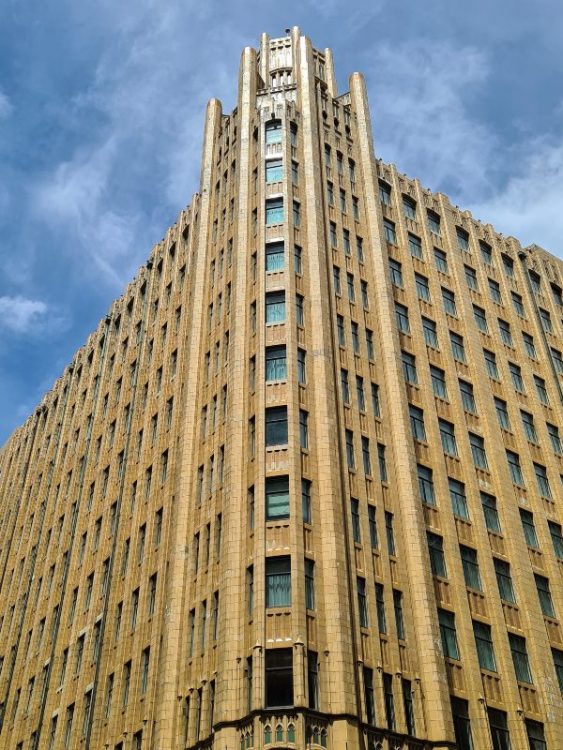
General MacArthur liked the building so much that he made it his headquarters during WW2.
Today you can enjoy the building by booking one of the 382 rooms at the Grace Hotel or dining in one of their restaurants.
Architect: Morrow and Gordon l Built:1930
Address: 77-79 York Street, Sydney
1 Bligh Street
This shining modernist construction, towering over Circular Quay, has won awards for both its beauty and its features.
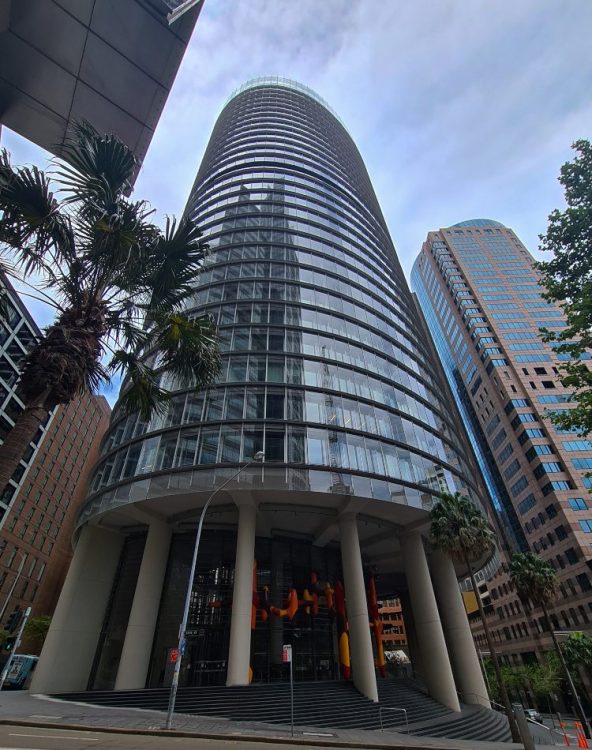
The building’s facades cut glare, cooled beams maintain the temperature and a plant in the basement recycles 90% of the building’s water. These features earned a converted 6-star green status.
In 2012, 1 Blight Street won two international awards: the Best Tall Building Award in Asia & Australasia in the Council on Tall Buildings and Urban Habitat’s Skyscraper Awards and the International Highrise Award.
Two eye-catching features are the building’s green wall on the Bligh street side of the building and the colourful James Angus Sculpture on the O’Connell Street corner.
Architect: Ingenhoven in collaboration with Architectus l Built: 2011
Address: 1 Bligh Street Sydney
Hero of Waterloo
The Hero of Waterloo, a classic corner pub oozing with heritage, is right on Sydney Harbour at Millers Point. It has earned a place on the National Trust List.
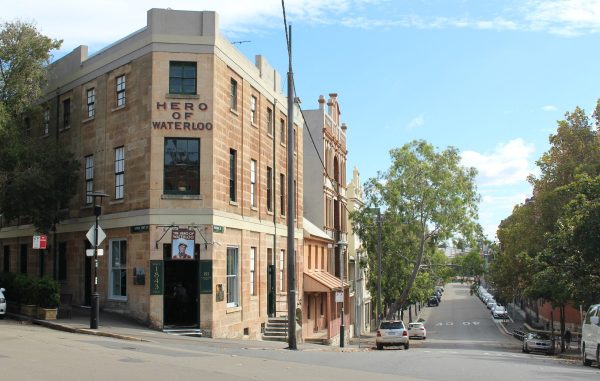
Ask about the pub’s mysterious tunnel leading towards Darling Harbour.
The pub is said to be haunted by Anne Kirkman, the wife of one of the publicans who fell (was pushed?) to her death down the pub’s stairs in 1849.
In the name of history, you should explore many more fabulous old pubs in the Rocks!
Tip: The Hero of Waterloo has great Old Time Jazz and folk music sessions most weekends.
Architect: George Paton l Built: 1844
Address: 81 Lower Fort St, Millers Point
Explore all the colonial buildings in the Rocks using our self guided walking tour
Government House
Next to the Royal Botanical Garden, Government House, a brilliant example of Gothic Revival, has been home to the Governors of New South Wales since the 1840s.
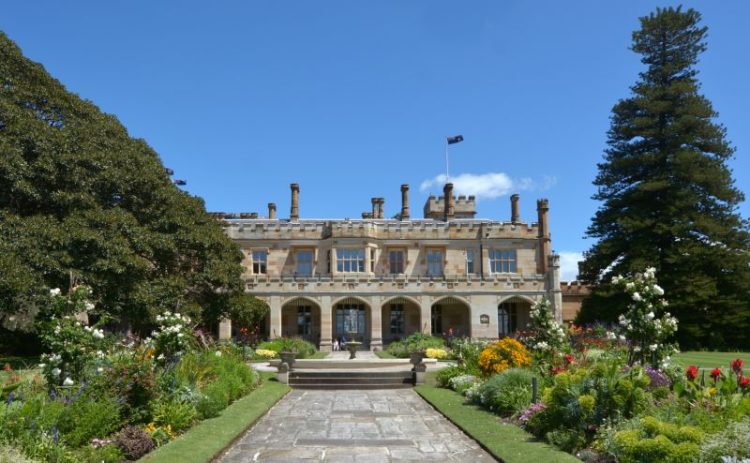
Much of the premises remains open to the public, and you can join one of the free tours to learn more about the building and its residents.
Within the gates of the Royal Botanic Gardens, you can visit the Government House’s own garden every day of the week between 10 am and 4 pm unless hosting official functions. If you are exploring the Botanic Gardens, take a few minutes to pop in.
Architect: Mortimer Lewis and Edward Blore l Opened: 1847
Address: Conservatorium Road Bennelong Point.
Conservatorium of Music
Sydney’s Conservatorium, part of the University of Sydney, began life as a picturesque Gothic stable for Governor Macquarie.
Famous convict architect Francis Greenway built it. The building, known as “a palace for horses”, was so expensive it caused Macquarie to be recalled to Mother England.
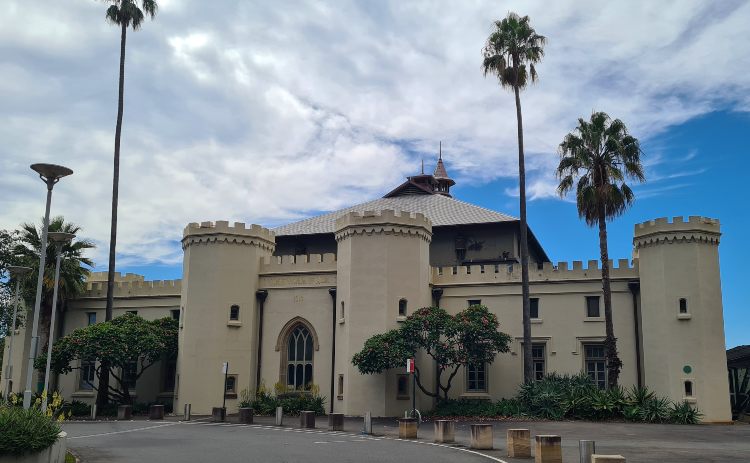
Today you can visit the building to attend one of the many concerts put on by students or stroll the outside when touring the Botanic Gardens.
Architect: Francis Greenway
Opened: 1820
Address: 1 Conservatorium Rd, Sydney
Elizabeth Bay House
This sumptuous villa, once called “the finest [house] in the colony”, has a classical feel. Constructed in Greek Revival style, it was allowed to decay during the middle of the 20th Century before the villa and accompanying grotto was painstakingly restored.
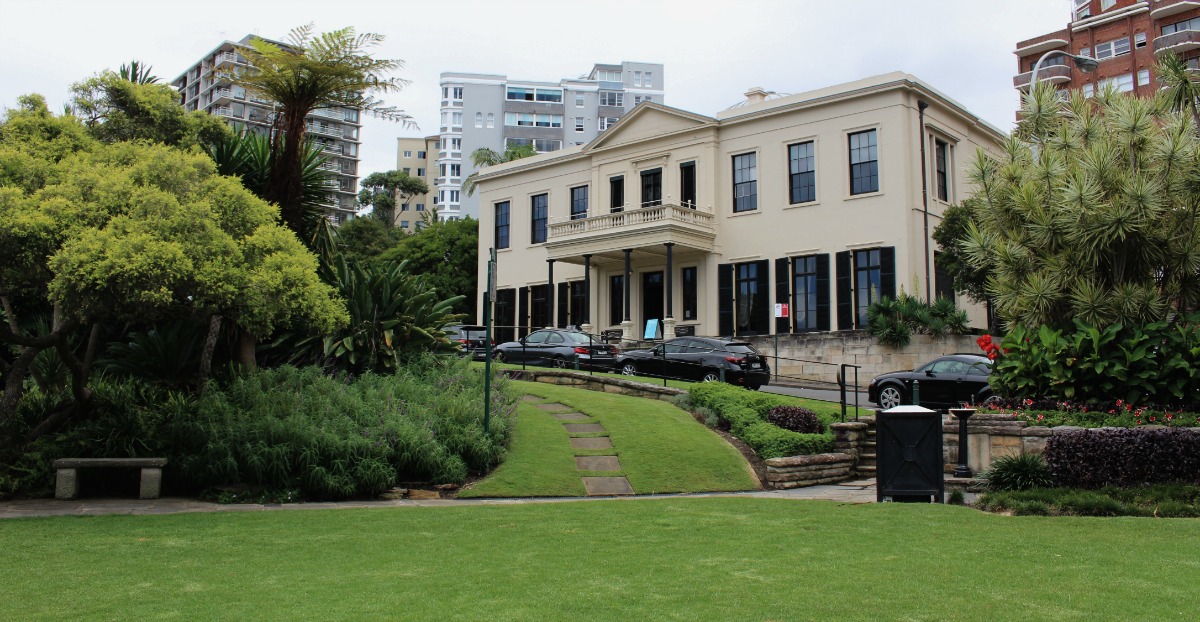
The property was home to Alexander Macleay and his family. At the time they lived here, its gardens ran to the water’s edge Today it’s part of the Sydney Museums of History properties, allowing you to tour the beautifully furnished property.
Architect: John Verge l Built:1895
Address: 7 Onslow Ave, Elizabeth Bay
Australia Square
When Australia Square was built in 1967, it was the tallest structure in Sydney and the first modern skyscraper in the country.
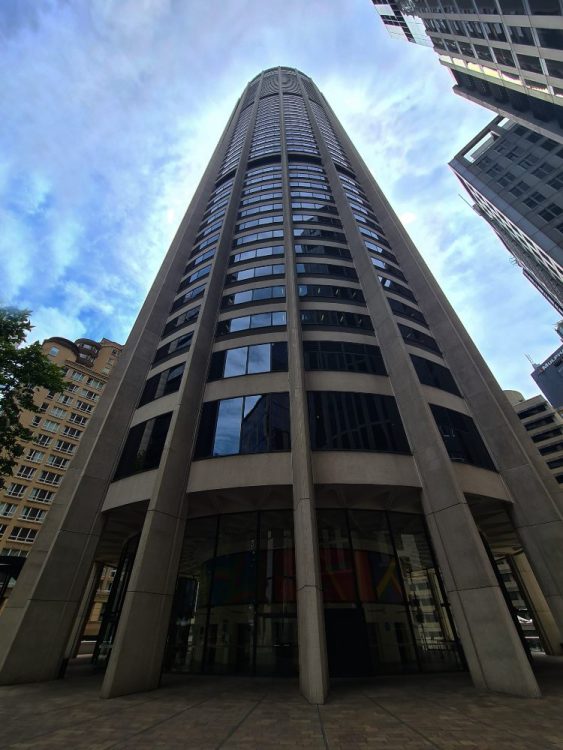
Harry Seidler’s Australia Square, although long since eclipsed by its neighbours, remains a modernist Australian architecture
At the base of the complex is a popular lunchtime food court and bar. Head to level 47 for O Bar and Dining, a revolving restaurant that is the perfect place to take in a Sydney sunset. Facing George Street, you will find a work by American sculptor Alexander Calder.
Architect: Harry Seidler l Opened: 1967
Address: 264 George Street, Sydney
State Theatre
The State Theatre, built to be “the Empire’s Greatest Theatre” at the peak of the Jazz Age, combines Gothic facades with a neoclassical interior and baroque auditorium, giving you a glimpse of the show business of yesteryear.
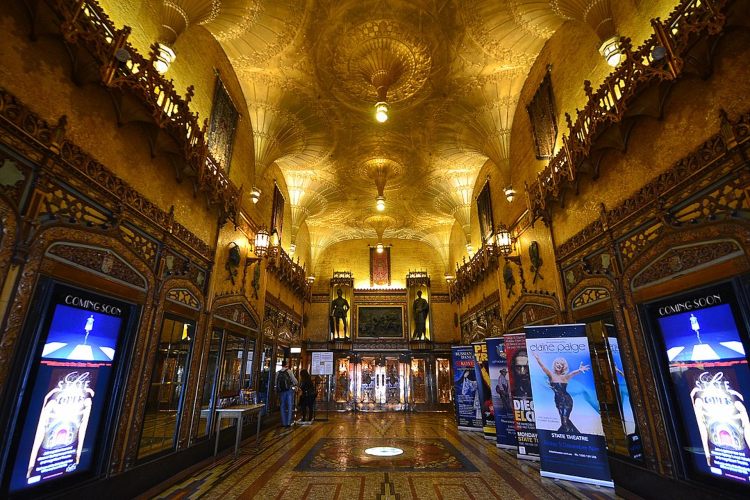
The theatre is referred to as the “Palace of dreams”
Seating 2,034 people and filled with an impressive collection of classic art, including work by William Dobell, sculptures and stunning chandeliers. If you want to learn more about this fantastic property, book one of their guided tours. At the very least, wander into the foyer as you walk past.
Architect: Henry Eli White l Opened: 1929
Address: 49 Market St, Sydney
Queen Victoria Building (QVB)
Filling an entire city block, the Queen Victoria Building is named in honour of Britain’s greatest monarch, who stands just outside with her faithful talking terrier Islay.
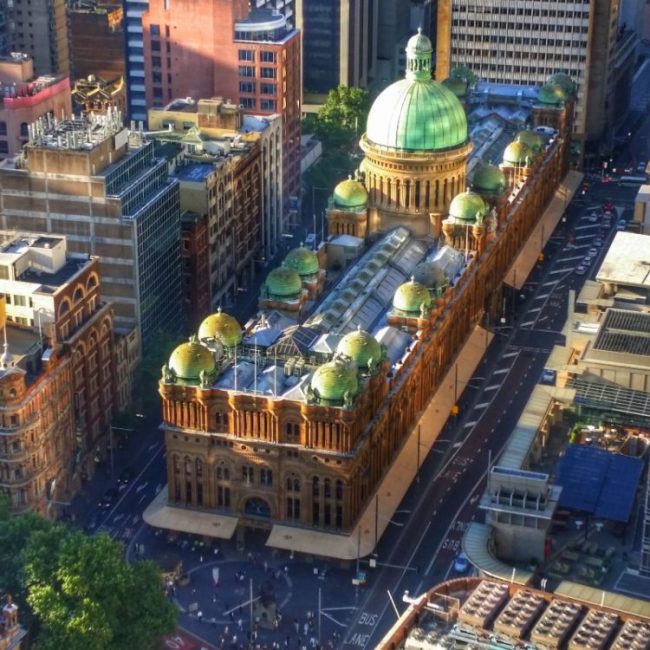
The Romanesque building’s exterior has been carefully restored. Journey inside to see the reconstructed caged lifts that take shoppers from one stylish boutique to another.
In 1959 they floated a plan to demolish the QVB and build a car park! It was not until 1971 that the building was protected, and in 1974 it was placed on the National Trust.
Dictionary of Sydney
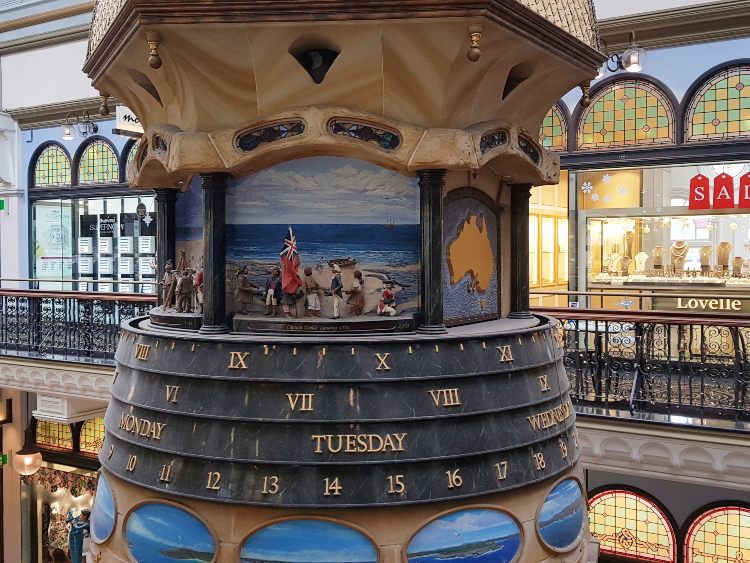
There are two clocks in the QVB that you should not miss:
- The Great Australian Clock at the Market Street end of the building features 130 hand carved figures and 27 paintings detailing key moments in Australian history.
- The second, the Royal Clock, at the southern end, “performs” on the hour between 9 am and 9 pm.
The building was constructed during an economic depression to employ the cities, stained window artists, and stonemasons. Its renovation in the 1980s restored its beauty.
Architect: George McRae l Opened: 1898
Address: 455 George St, Sydney
AWA Tower (Amalgamated Wireless Australia)
Built in 1939 in Art Deco style, the AWA Tower and the building beneath might remind the onlooker of Clark Kent’s Daily Planet, evoking a Golden Age of Radio and media.
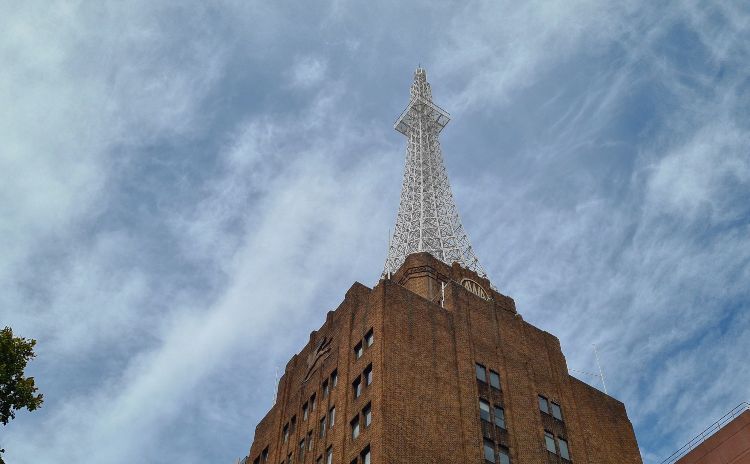
The 15 storey building, topped by a radio transmission tower, was the tallest building in Sydney until the 1960s.
The tower was modelled on Berlin’s Funkturm Tower, and both were inspired by the Eiffel Tower in Paris.
Dictionary of Sydney
Architect: Morrow and Gordon l Opened: 1939
Address: 47 York St, Sydney
Commonwealth Trading Bank Building
The Commonwealth Trading Bank building, known affectionately as the Money Box by locals, synthesises Classical Greek influences with contemporary Art Deco. Built just after the federation, the building symbolised the government’s growing power over the national economy.
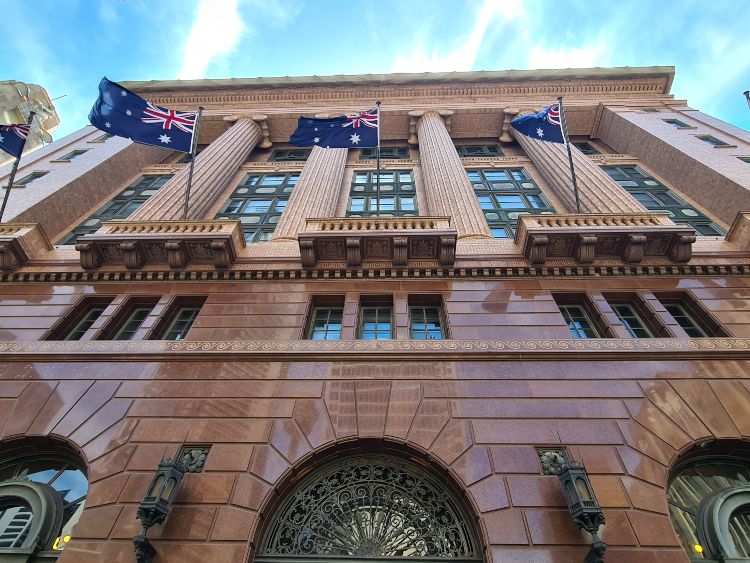
It features Ionic columns on the exterior facing Martin Place, Corinthian columns framing the balcony doors, and Doric columns on the roof.
Take a walk inside and check out the towering Eucalyptus coloured marble columns. The building is now home to Macquarie Banks’ global headquarters, while the ground floor is still a functioning Commonwealth Bank branch.
Architect: H E Ross & Rowe l Opened: 1916
Address: 120 Pitt St, Sydney
MLC Centre
This white Bauhaus tower, regarded as one of Harry Seidler’s masterpieces, blends elegance with functionality to house some of Sydney’s most sought-after office space.
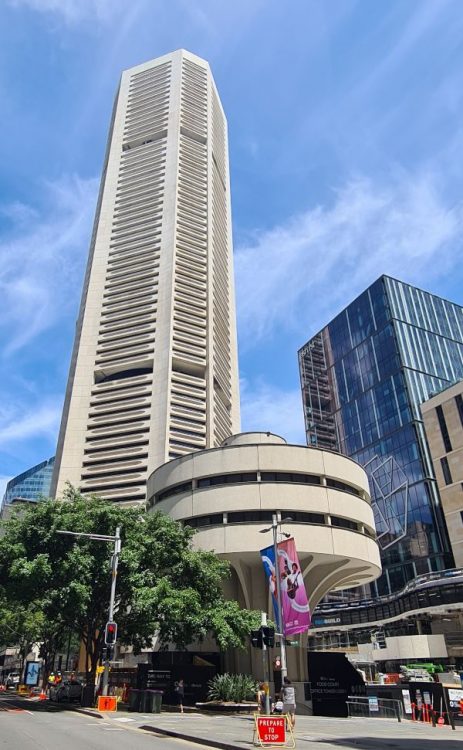
It features an octagon floor plan of 67 floors with some breathtaking views of the city offered from offices here.
From 1977 to 1992, the MLC Centre was the tallest office building in Sydney.
The street-level features a large food court and supermarket. The mushroom looking building in front of the tower is part of the original construction. It is home to the Commercial Travellers Club, which offers rooms, a bar and bistro and meeting facilities for members.
Architect: Harry Seidler l Opened: 1977
Address: 19 Martin Pl, Sydney
General Post Office, Martin Place
The General Post Office, built from Sydney sandstone, is “the finest example of the Victorian Italian Renaissance Style in New South Wales.”
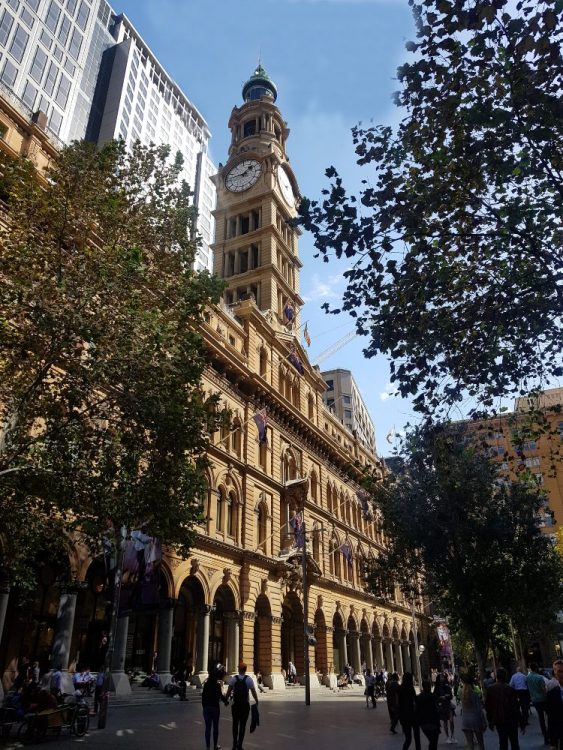
The central Australia Post office, a landmark of the city, until 1996, is now home to a small post office that shares the floor space with cafes, galleries and boutiques. It is also home to the Fullerton Hotel who do wonderful free tours.
Tip: Head to the basement of the building, where you can view a piece of the Tank Stream that once supplied water to Sydney.
Architect: James Barnett, Walter Liberty Vernon l Opened: 1824
Address: 1 Martin Pl, Sydney
Department of Lands building
The Department of Lands was vital to New South Wales’ expansion as a colony, and its headquarters were suitably grand: three stories of Victorian Renaissance Revival. Its ornate façade is heritage listed, though now in private hands.
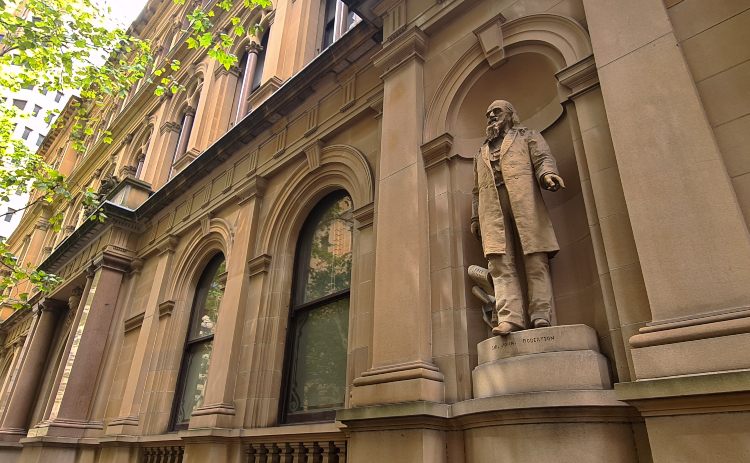
The building features 12 niches on each facade that were designed to be filled with statues of explorers. Only 23 statues were placed at the building’s completion. While two more were suggested, Kingsford Smith and Bert Hinkler, they were sadly not added.
A figure of James Meehan was added in 2009.Among the explorer included are Bass, Blaxland, Bourke, Flinders, Hovel, Hume, Lawson, Leichhardt, Oxley, Parkes, Phillip, Roberton, Sturt, Wentworth and Wills.
Among the explorer included are Bass, Blaxland, Bourke, Flinders, Hovel, Hume, Lawson, Leichhardt, Oxley, Parkes, Phillip, Roberton, Sturt, Wentworth and Wills.
Architect: James Barnett, Walter Liberty Vernon l Opened: 1876
Address: Bridge Street
Great Synagogue
Since before Federation, the Great Synagogue has served the city’s Jewish community and is the earliest surviving synagogue still in use. The Great Synagogue, a one-of-a-kind building, combines Gothic architecture with the Eastern inflection of Byzantine Revival.
Did you know that there were 8 Jewish convicts on the first fleet?
Free tours of the building are usually offered, but these are currently suspended. However, you can make private bookings. See their website for details.
Architect: Thomas Rowe, Walter Liberty Vernon l Opened: 1878
Address: 166 Castlereagh St, Sydney
Anzac Memorial aka Hyde Park War Memorial
Like the Opera House, the design for this memorial resulted from a competition. Bruce Dellit’s design was a popular winner of the 117 entries received.
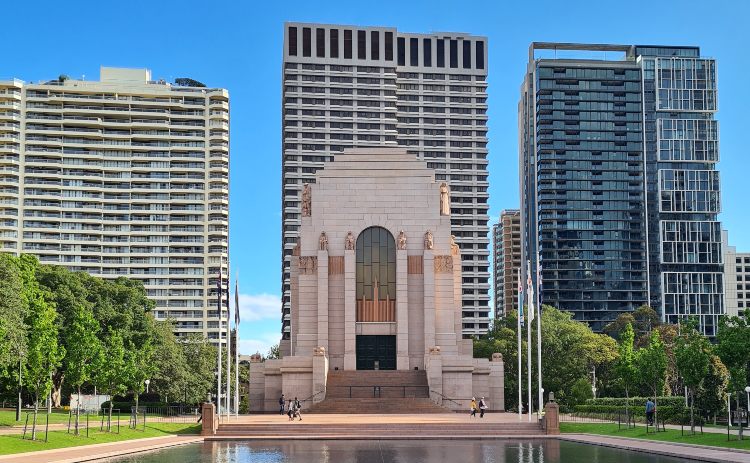
You can visit the memorial on weekdays. Entry is free and there are several exhibitions to view.
Architect: Bruce Dellit and sculptor Rayner Hoff l Opened: 1932
Address: Liverpool Street, Hyde Park South Sydney
St Mary’s Cathedral
Once a small chapel, St Mary’s is now an English Gothic basilica and the home of Sydney’s Catholic community. It is a beautiful building lit with stained-glass windows; its interior is filled with priceless devotional objects and a magnificent pipe organ.
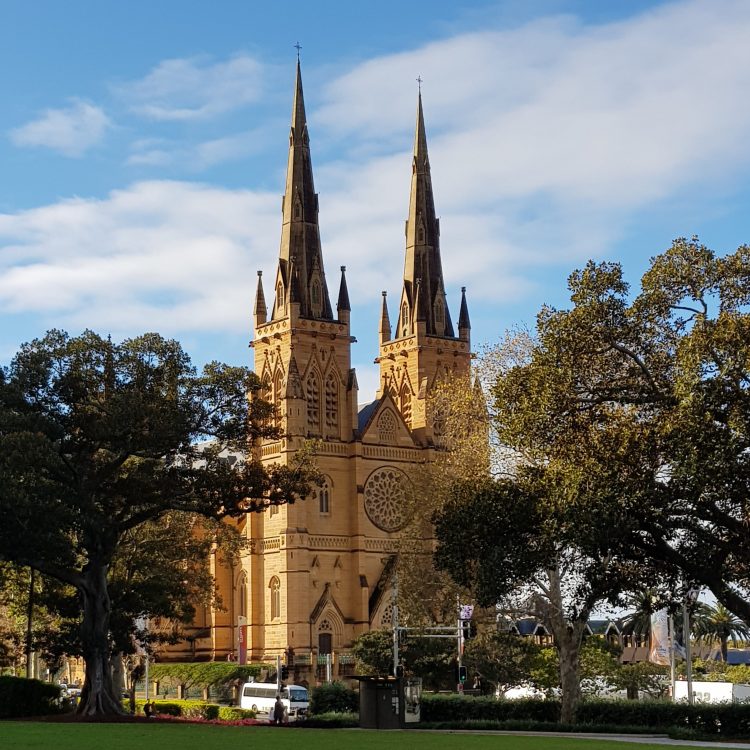
You can take a free tour of the cathedral on Sundays after the 10:30 am Mass. Join the tour near the college street doors.
The Cathedral’s southern spires were installed in 2000 and completed the architects’ original design.
You are also welcome to attend events or masses.
Architect: William Wardell, Augustus Pugin l Opened: 1838
Address: St Marys Rd, Sydney
Sydney Hospital
Sydney Hospital is Australia’s first hospital. It was referred to as ‘The Rum Hospital’ because it was built with finance from local business owners in exchange for rights to a monopoly on the city’s rum trade.
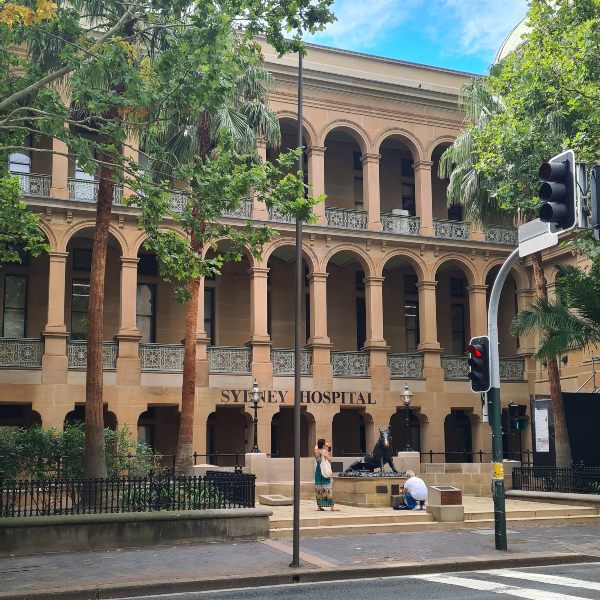
The original site comprised three Colonial Georgian buildings: the central facility that remains a working hospital today, and the north and south wing, which became Parliament House and The Mint, respectively.
“In 1868, Lucy Osburn established the first nursing school in Australia at the Sydney Hospital site after being sent to the colony by Florence Nightingale following a request by the colonial government.”
South Eastern Sydney Local Health District
Tip: I highly recommend wandering into the central courtyard to view the beautiful fountain. You can also take a museum tour between 10 am and 3 pm on Tuesdays (closed public holidays) on level 1, Nightingale Block.
Architect: John O’Hearen (unconfirmed but considered most likely) l Opened: 1811
Address: Macquarie St, Sydney
Sirrus Building The Rocks
Sydney’s most divisive construction, is possibly Australia’s most famous example of Brutalist architecture. It is easily visible as one drives over the Sydney Harbour Bridge or departs Circular Quay on a ferry. Since they completed it in 1980, it has remained a polarising construction.
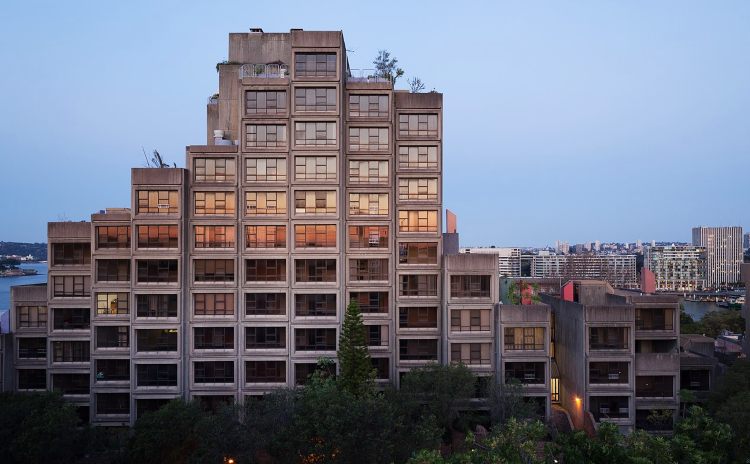
Originally designed as public housing to provide homes for locals who had been displaced from run-down properties in The Rocks, it was sold off in recent years.
After a solid campaign to save the building, it has been announced they will keep it intact and renovated. It is expected it will offer 89 private units and some retail space.
Architect: Theodorus (Tao) Gofers l Opened: 1981
Address: 48 Cumberland St, The Rocks
Registrar-General’s building aka Land Titles Office
The Land Title’s Office (or the Registrar-General’s Building), formerly the depository of the state’s records, was vital to New South Wales’ bureaucracy in the pre-digital age. Although now defunct, it remains a heritage-listed example of the Federation Gothic style.
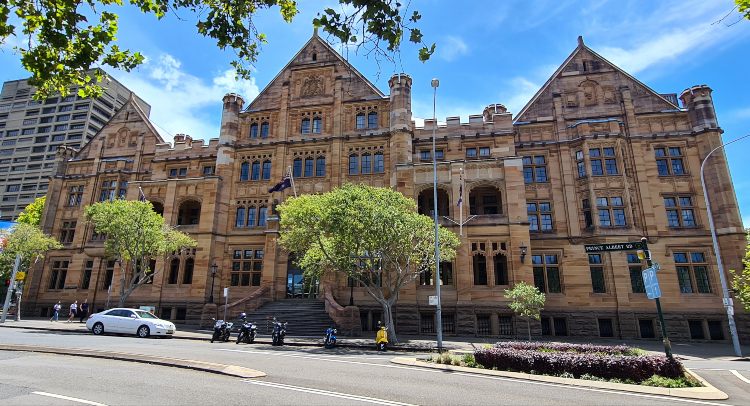
Architect: Walter Liberty Vernon l Opened: 1913
Address: 1 Prince Albert Rd, Sydney
Indigo Slam
The private residence of art collector and philanthropist Judith Neilson (AM), who owns White Rabbit Gallery, is Indigo Slam, the most recent Brutalist style structure to be completed in Sydney. They gave the architects the brief to design a sculpture that could be lived in.
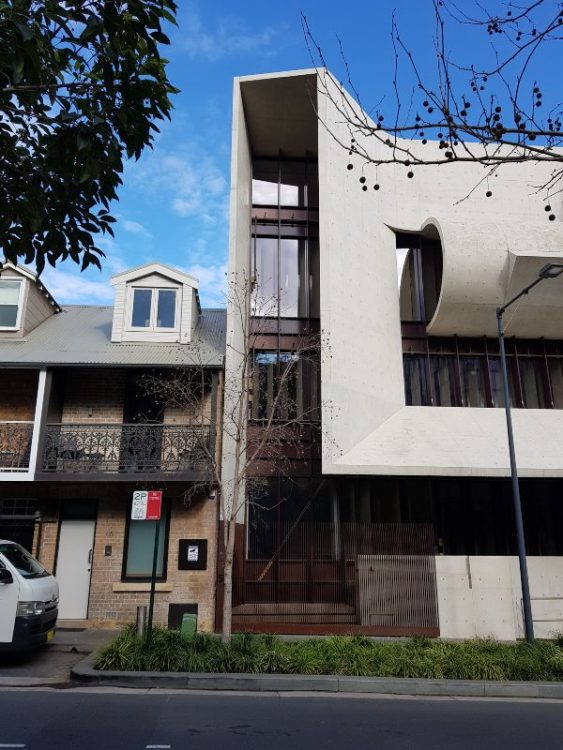
The building, which is considered one of Sydney’s most beautiful private homes, has won 18 architecture and design awards and features a dining space to seat 60 guests. The three-story property with a basement is
Architect: William Smart and Smart Design Studio l Opened: 2016
Address: 51 O’Conner St Chippendale
Cadman’s Cottage
Cadman’s Cottage, the second-oldest surviving residential building in the city, is located on what was once the shoreline of Sydney Harbour. Built in 1815 as the home of the government coxswain.
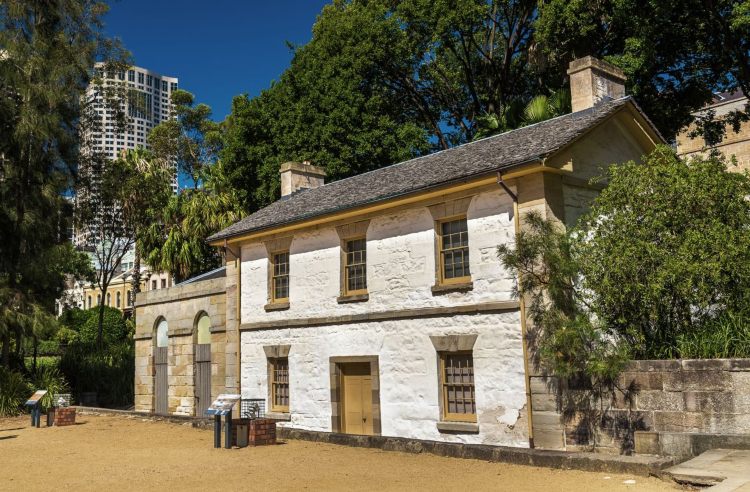
They named the building after its first resident, John Cadman, a convict transported for life for stealing a horse. He lived there until his retirement, and after several years, it became a water police station. Sadly, it’s no longer structurally sound so you can no longer enter.
Take our self guided walking tour of The Rocks to learn more about Sydney’s oldest streets.
Architect: Francis Greenway (unconfirmed) l Opened: 1816
Address: 110 George Street The Rocks
Meudon
The Meudon is a high-rise apartment block, triangular in design and reminiscent of the famous Flatiron Building of New York. Flats in this Art Deco gem offer a great view of the harbour and go for astronomical prices.
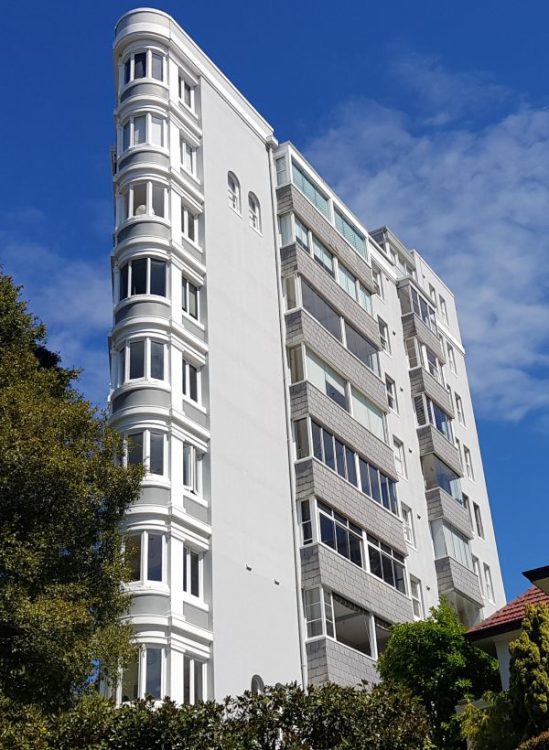
The building overlooks Sydney Harbour, and when one of the 18 properties occasionally hit the market, they sell quickly. In 2018, an unrenovated apartment sold for 2.15 million.
Architect: Architects Crane and Scott l Opened: 1933
Address: 13 Onslow Avenue Elizabeth Bay
There you go. We could have easily added a dozen more, but for now, what is your favourite? We would love to hear!
Want to explore more of Sydney’s architecture? Check out this list of Sydney’s oldest buildings.
Looking for ways to save money while exploring Sydney? We have listed 75 things to do that won’t cost you a cent!
Have questions about things to see and do in Sydney?
Head over and join our Facebook Group and we will be happy to help.

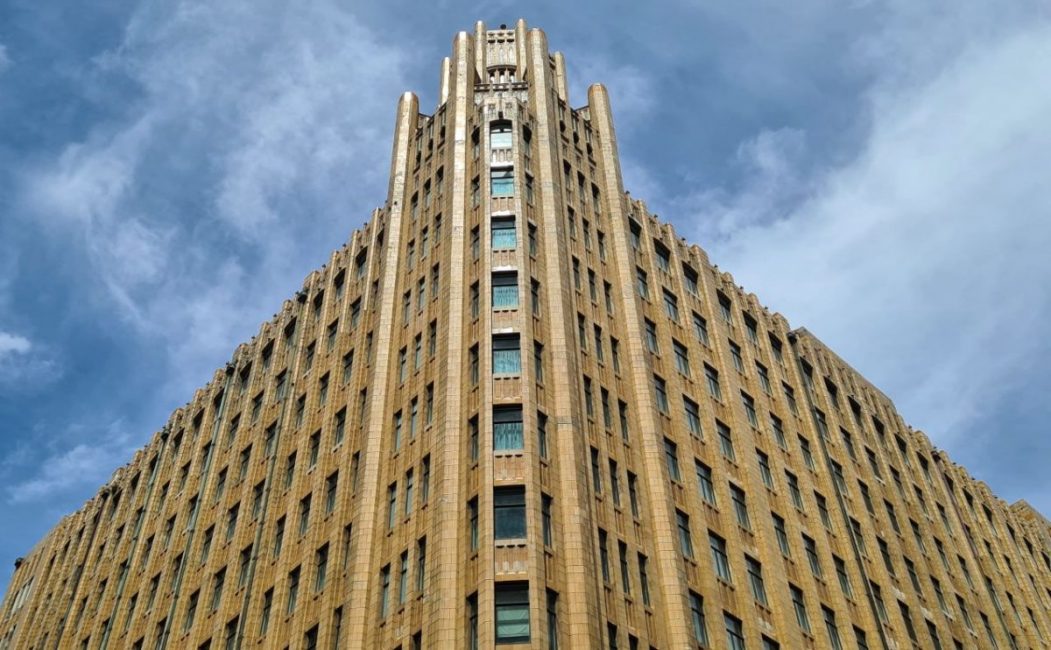

Lovely article! Very informative and interesting. That must have been a lot of work to gather, thanks! Keep up the good work. Best regards, Elisa
What a wealth of info this post is. I must admit I much prefer the traditional buildings, and my faves are Govt House, State Theatre, QVB, and the cathedral. Must make sure I visit them next time I’m in Sydney.
This is a beautiful collection. It has inspired me to walk around and find the ones I haven’t come across in this beautiful city. Where can I find your photos please, and do I have permission to frame and display some of them in my air bnb. Thank you very much.
Loretta
Hi Loretta As long as the photo credit is not to Destination NSW or another photographer that would be fine.
What is the name of the architecture that is supposed to be a art gallery and looks multidimensional? Can’t find anything in Sydney. Please let me know. Thanks
I am not sure what you mean. Do you have any more details. We have a list of Museums and Galleries here https://sydneyexpert.com/galleries-and-museums-in-sydney/
What about the opera house?
Good call, we didn’t even think to include it! It beyond iconic and I think of it as a place not a building but you are right. It should be on this list. I may just add it when I get a chance. Thanks Paula